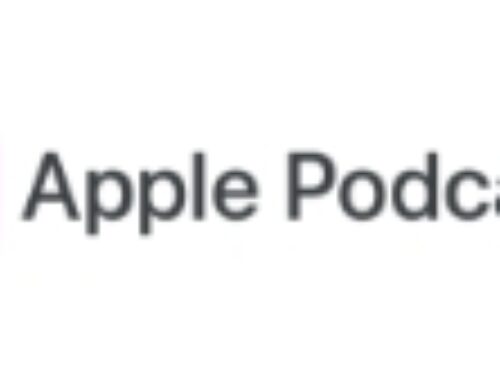Paid search (aka pay-per-click or PPC) often yields the highest ROI of any digital advertising medium. Our agency, therefore, manages Google Ads for dozens of our clients.
Google Ads (and its much smaller competitor Microsoft) work so well because they target people actively searching for healthcare solutions. Moreover, paid search delivers tremendous advantages and provides near-immediate feedback in the form of actionable data.
Google Ads are also:
Optimizable
Flexible
Fast
Precise
Finally, Google Ads is also an excellent tool for marketing healthcare providers on a location-by-location basis.
Healthcare marketers can target specific audiences, keywords, and demographics for each business location under one campaign umbrella.
At Healthcare Success, our clients often ask us to optimize their existing Google Ad campaigns. The first thing we do is conduct a comprehensive audit and identify areas of opportunity. These typically include changes that maximize their budget and increase overall campaign effectiveness.
Maximizing your marketing budget is one of the top reasons continual ad optimization is crucial for healthcare businesses. Why? It’s our goal to increase ad conversions while reducing their average cost per conversion.
Keep reading to learn why ad optimization matters and 20 ways to boost conversions.
Why Does Ad Optimization Matter?
Google Ad campaigns are complex and constantly changing.
Staying on top of new opportunities and deciding which updates are best for your strategic goals are essential for maximizing campaign success and ROI.
Optimized ad campaigns:
Are highly relevant to your target audience
Have action-oriented messaging and calls to action
Inspire an emotional response, so the visitor feels compelled to click
Making continual optimizations to your Google Ads ensures you consistently target the right people at the right time and with the right product or service. It also ensures you’re using your marketing dollars wisely.
How to Optimize Google Ads & Boost Conversions
Here are 20 tips to help optimize Google Ad campaigns and maximize return on ad spend (ROAS). While these principles apply to businesses of all sizes, they are essential for large- and enterprise-sized companies as they support maximum return on investment.
Focus on Keywords
1. Align keywords with your products and services
Include core products and services in your keyword strategy. When customers and patients are ready to convert, they’ll search for specific product and service names, so including them is essential for maximum ad performance.
2. Understand how consumers research and their buying behavior
Using low-funnel terms like “treatment,” “cost,” “buy,” or “screening” can help target high-intent queries from those that are more research-oriented.
3. Use negative keywords
Negative keywords can help filter out lower-value clicks. Adding words like “jobs,” “salary,” “how to become,” and “comparison” to your negative keyword list on the Google Keyword Planner and Search Terms Report can help you weed out irrelevant uses of your keywords (e.g., when a different industry uses them, for a different purpose).
4. Use the right keyword match types
There are three primary match types: broad, phrase, and exact. When used strategically, each match type can help boost your Google ad to high-intent audiences.
a. Broad match captures a wide range of search queries.
b. Phrase match captures queries that contain a specific phrase.
c. Exact match captures queries that match search queries with the same meaning or intent.
5. Target long-tail keywords
Longer, multi-word phrases attract higher-intent consumers at the bottom of the marketing funnel. Longer, more specific keyword phrases allow you to reach a refined audience and give you a competitive edge (as fewer competitors are likely to target them specifically).
Keep Search-Intent Front and Center
6. Identify which ads are showing for particular search queries
Leverage Google’s Ad Preview and Diagnosis tool to stand out from competitors. Ensure your text quickly conveys why they should choose your business. Start by showcasing unique selling propositions and key differentiating factors.
7. Feature consumer benefits
Showing consumers how they’ll benefit from your products and services will also help incentivize conversion.
8. Keep it simple—and specific
Don’t try to do too much in a single ad because it will only diminish its effectiveness and muddle your message. Keep messaging simple with one selling point.
9. Use a landing page that drives leads
Build and optimize a single landing page for each ad campaign. Stop driving Google ad conversions to your homepage. You will win more conversions when your ad copy matches your landing page copy.
10. Don’t forget seasonality
When possible, customize your ads to fit the season. Tie in seasonal medical concerns (e.g., colds and flu, seasonal allergies, asthma, heat exhaustion, sunburn, etc.) to drive higher conversions.
Get the Structure Right
11. Use title case
Title case means capitalizing every word or proper noun in your headline (check out our blog title as an example). This strategy is a great way to help your ad stand out without violating Google’s policies on capitalization. Moreover, several studies have found that title case outperforms sentence case when used in ad headlines.
12. Use ad extensions
List site links, callouts, structured snippets, location extensions, and more to provide fingertip access to additional, relevant information. This will help increase your click-through rate.
13. Choose the best campaign types
Certain ad types will work better than others, depending on your unique marketing goals. A skilled digital strategist can help determine the most effective kinds to drive lead generation, sales, website traffic, brand awareness, etc.
Here is a quick rundown of the seven campaign types and where they appear:
Search: Text ads on the search engine results page (SERP)
Display: Media-rich (video or image-based) ads on websites targeting consumers for general awareness
Discovery: Native-looking image-based ads targeting consumers ready to engage and convert
Video: In-feed video ads on YouTube
Shopping: Product ads on Google
App: Mobile-only app-specific ads across several channels
Performance Max: AI-driven, all-in-one campaign builder that replaced the local search and smart campaign types in July 2022. This campaign type allows marketers to dynamically generate and serve ads across multiple platforms, including YouTube, Display, Search, Discover, Gmail, and Maps.
Sharpen Your Parameters
14. Create custom audiences
Optimize your Google ad campaigns by targeting specific groups of people based on particular demographics (e.g., household income, age, gender, occupation, geography, devices, and more). This helps maximize your ad spend and effectiveness.
15. Optimize for the time of day
Once you have your campaigns up and running, you can analyze how they perform throughout the day and set your campaigns to appear more often during those times.
16. Set your budget
Google Ads allows you to set a daily or shared budget for a campaign based on your advertising goals and the daily amount you want to spend. This feature provides peace of mind that you’re limiting your ad spend, which can be especially advantageous for fixed budgets, or when testing a new ad concept.
17. Test smart bidding strategies
Optimize conversions and significantly increase the number of signals (e.g., campaign types, audiences, demographics, locations, time of day, etc.) with AI-driven bidding strategies.
Track and Analyze
18. Click-Through Rate (CTR)
CTR is the percentage of total ad views that result in clicks and directly impacts your quality score. Fine-tune your ad campaigns and landing pages by optimizing your click-through rates (CTR) with clear calls-to-cation (CTAs), positive and negative keywords, and targeted audiences.
19. Conversion rate
Conversion rate is the percentage of total clicks that result in interactions. Businesses can optimize conversions by fine-tuning ad campaigns and landing pages with emotive messaging, clear CTAs, and correct and negative keywords. Set your primary conversion goal/objective (e.g., more calls, form submissions, etc.) based on what is most valuable to your business.
20. Continually improve your quality score
Higher CTRs and conversions mean higher quality scores and lower ad costs.
Google Ads is becoming increasingly competitive for healthcare leaders. To compete effectively, you’ll need support from a highly skilled professional to monitor and adjust your campaigns weekly–if not more.
Google Ads requires deep knowledge of building and executing effective keyword and bidding strategies to ensure each marketing dollar targets a high-intent audience ready to convert.
Whether you’re building your Google Ads for the first time or working with a seasoned professional to renovate your existing Google Ad campaigns, I’d be remiss if I didn’t point out that you usually will need at least six months to fully optimize a campaign.
Once the initial changes have been implemented and you begin phase two, conversion and revenue gains will likely continue, albeit at a slower rate.
However, you will experience continued success with expert guidance, continual monitoring, and optimizing when carefully considering each vital optimization opportunity.
These extend deeper into your overall marketing strategy and build upon each other to compound your campaign’s effectiveness:
Consumer Demand
Campaign Management
Landing Page
Conversion Process
For more information or to schedule a free consultation about your Google Ad campaigns, contact a skilled digital strategist at Healthcare Success by calling 800-656-0907.






Leave A Comment